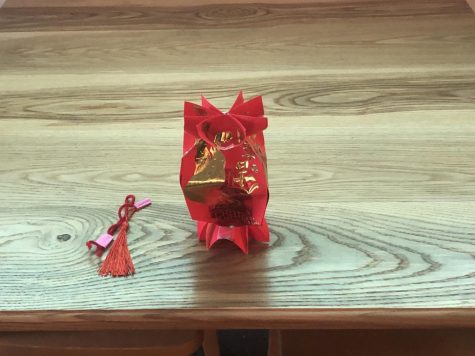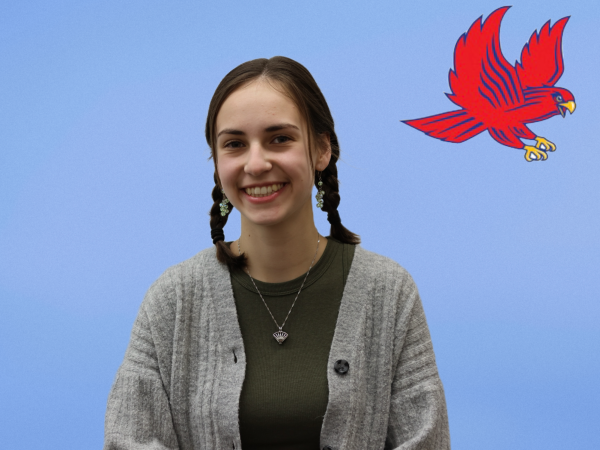Community and Celebration — Exploring the Asian American Pacific Islander Club and Their Lunar New Year Celebration
The AAPI club strives to provide a space that is inclusive and celebrates Asian culture.
February 16, 2022
This year, juniors Catie Tassinari, Raphael De Leon, and Madeline Obuchowski have taken over as co-leaders of the Asian American Pacific Islander (AAPI) Club after joining together as freshmen.
The AAPI Club has created a space that is “inviting, welcoming, and a family,” Tassinari said. “It’s a community that we wanted to gather together to celebrate, but also help people get exposed to learn different Asian American and Pacific Islander cultures.”
To sophomore Kayley Nguyen, who joined the club last year, the AAPI Club is a place where Asian American and Pacific Islander students can feel represented, heard, and safe.
“I think it’s important to La Salle because it gives us a voice and we’re not left out,” Nguyen said. “People can educate themselves on our culture and common stereotypes can be broken.”
For freshman Kari Yatsushiro, the AAPI Club has given her a place to strengthen relationships and be a part of a community of people with whom she shares some similarities. “It means a lot to have relationships with people through activities and then we have something in common with each other,” Yatsushiro said.
The club leaders recently changed the name from the Asian Pacific Islander Club to the Asian American Pacific Islander club. In previous years, the leaders said the club mainly focused on the Asian community, and while not taking away from that, the leaders felt it should be opened up to everyone at La Salle who wants to experience the Asian culture, making the club an even greater support system.
“When we were making it we specifically told people you don’t have to identify or celebrate these cultures to join,” Tassinari said. “We just want this club to be something where anyone of any ethnicity can learn about the Asian American or Pacific Islander culture.”

The AAPI Club is not only bringing cultures together, but connecting the different grade levels. Because of distance and hybrid learning last year and the year prior to that, some freshmen have had difficulties meeting upperclassmen.
“Even though technically I was in school with all of the sophomores, I still didn’t know them,” Tassinari said. “But now we can connect with them over this shared club that we’re in together.”
So far they have been meeting every 2-3 flex times in various rooms around campus. They have also had one meeting before school on a late start day to celebrate the Lunar New Year. Overall, there are around 40-50 active members in the club, according to the interviewed club leaders.
“When we do our club meetings, we don’t even really try to administrate anything — we just kind of let them do whatever they want,” De Leon said. “And so it’s very lively, pretty loud sometimes, and sometimes hard to control, but that’s an obvious sign that people are comfortable in our community.”
So far the club has done various activities that include Asian culture, one being an Asian cuisine Kahoot!. However, the most memorable meeting for the leaders and club members has been the Lunar New Year celebration, which the club celebrated Thursday, Feb. 3, during the late start time before school.
“Lunar New Year is a way of celebrating your life and how long you’ve been here,” Nguyen said. “And it’s overall a celebration to celebrate how far you’ve come, your accomplishments, and what you want for the future.”
The celebration’s date is based on the Lunar calendar and begins with the first new moon around the end of January or the beginning of February.

Each year is associated with a Zodiac animal that represents certain qualities and traits. 2022 is the Year of the Tiger, which the club celebrated by having a tiger drawing contest.
They made red and yellow paper lanterns that were hung around the school for decoration, which “represent good luck and good fortune for the new year,” Nguyen said.
They also made red envelopes that were passed out with chocolate coins inside. This reflects a tradition where elder relatives pass out red envelopes with real money inside to children.
“It’s just fun to be a part of my heritage and celebrate a part of who I am,” Yatsushiro said.

Along with the activities, the club leaders explained that a large part of the celebration is the food. At the celebration, there were all sorts of snacks from different Asian cultures like shrimp chips, rice crackers, melon candies, and boba mochi.
“Hopefully it has raised awareness around Asian culture, what we celebrate, and celebrating Asian culture as a whole community since it’s often not talked about within school,” De Leon said.
In the future, the AAPI club hopes to hold more celebrations in May for AAPI History Month.
“I think it’s really important for minorities [to create] clubs and [celebrate] their culture,” De Leon said.





